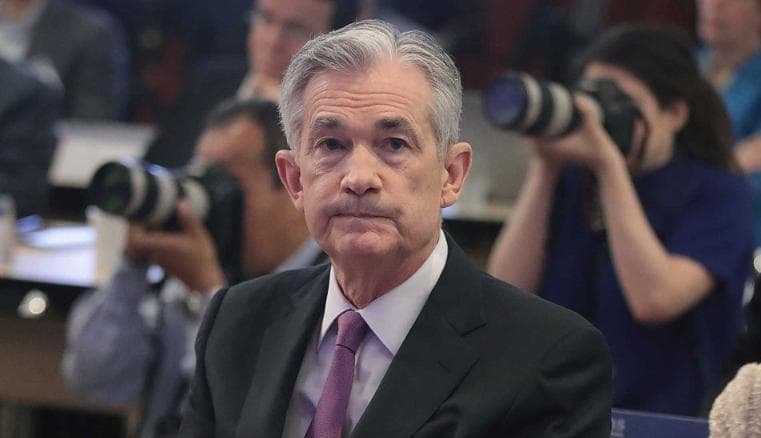Federal Reserve Chair Jerome Powell made clear the U.S. central bank was nowhere near exiting massive supportfor the economy during the ongoing coronavirus pandemic, as officials lefttheir benchmark interest rate unchanged near zero and flagged a moderating U.S. recovery.
The central bank’s policy-making body repeated it would maintain its bond-buying program at the currentpace of $120 billion of purchases per month until “substantial further progress” toward its employmentand inflation goals has been made. It made no changes to the composition of purchases.
Powell told a press conference Wednesday following a meeting of the Federal Open Market Committee that it would take “some time” to achieve the threshold for alteringasset purchases, making clear the central bank was not close to dialing them back.

“The whole focus on exit is premature,” he said, noting that the U.S was a long way from a full recovery and the Fed would take care to communicate clearly to make sure no one was takenby surprise of what he promised would be a gradual taper of purchases when the time came.
Some of his colleagues in recent weeks have publicly debated if a strong economic recoveryfrom the pandemic might warrant scaling down the buying later this year. That gave investors a nervousreminder of the 2013 taper tantrum, when unexpected news the central bank was considering reducing its asset purchases sent yields sharply higher with damaging consequences for the economy.
Read More : After Fed’s Meeting, Boeing Reports a Record $11.9 Billion annual loss
Yields on 10-year Treasuries hovered just above 1%, the dollar held its advance while the S&P 500 closed 2.6% lower for its steepest drop since October amid growing concerns that stocks have become overvalued.
While stocks fell on Wednesday, Powell was asked multiple questions about soaring prices in recent months, butdeclined to comment directly on spikes in shares of GameStop Corp. in particular.
In his press conference, and in the policy statement issued earlier by the FOMC, the focus was on the economy.
“The pace of the recovery in economic activity and employment has moderated in recent months, with weakness concentrated in the sectors most adversely affected by the pandemic,” the FOMC said in its statement. The revised language followed reports showing U.S. employment fell in December for the first time since April, and retail sales tumbled for a third straight month, amid resurgent coronavirus outbreaks across the country.
Powell said that the widespread availability of vaccines was grounds for optimism, noting “several developments point to an improved outlook for later this year.” He also said that he had received the first shot of the vaccine himself and expected to get the second soon.
Vaccination Roll-Out
The central bank also added a mention of vaccinations to its statement, saying the economy’s path will depend significantly not just on the coronavirus itself but also on progress with inoculations. The rollout has gotten off to a rocky start.
“The path of the economy will depend significantly on the course of the virus, including progress on vaccinations,” the statement said. “The ongoing public health crisis continues to weigh on economic activity, employment, and inflation, and poses considerable risks to the economic outlook.”
That drops a time reference to risks to the outlook “over the medium term” that appeared in their December statement.
The committee unanimously voted to keep the federal funds target rate in a range of zero to 0.25%, where it’s been since March. In a separate move, the Fed reaffirmed its statement on longer-run goals updated in August, while making no changes.
As well as the annual rotation among regional Fed presidents who vote on the FOMC, its ranks were joined by Christopher Waller, who was sworn in as a governor on Dec. 18.
The committee’s decision marked the conclusion of the Fed’s first policy meeting since Democrats took control of the Senate in early January — a development which was widely seen as brightening the outlook for the economy in 2021 by boosting the odds of additional fiscal stimulus.
That sunnier outlook had sent U.S. stocks to record levels and yields on 10-year U.S. Treasury notes above 1% for the first time since March, helped along by President Joe Biden’s proposed $1.9 trillion relief package.
(Source – Bloomberg)

Comments are closed.